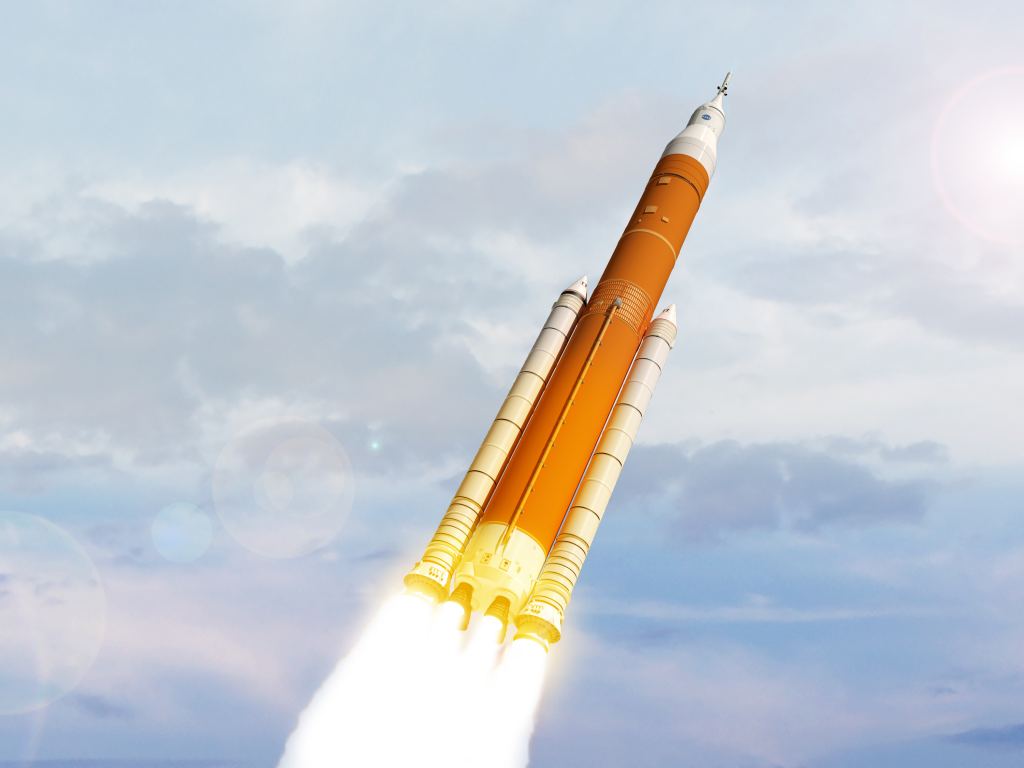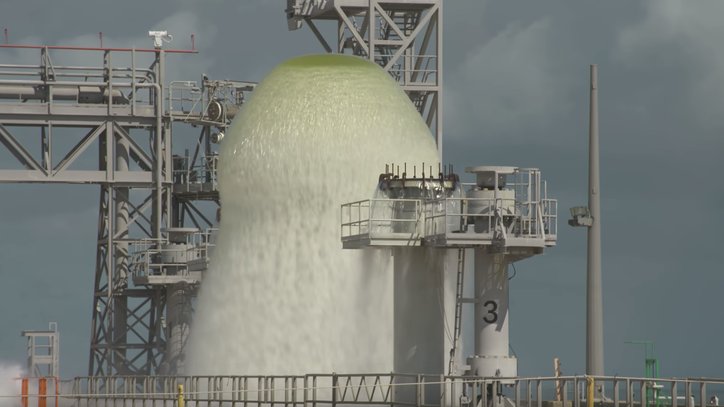As rockets become more and more powerful, the systems that protect them need to keep pace. NASA will use almost half a million gallons of water to keep the Space Launch System (SLS) safe and stable enough to launch successfully. The system that delivers all that water is called the Ignition Overpressure Protection and Sound Suppression (IOP/SS) water deluge system, and seeing it in action is very impressive.
The moment of launch is a dangerous time for any rocket due to the incredible energy released. The SLS is an extremely powerful design—it will be the most powerful booster ever built—and the extreme heat, sound pressure, and acoustic vibrations must be controlled to protect the SLS, the Orion capsule, and the launching pad. The SLS’s 4 RS-25 engines and 2 boosters produce a combined 8.4 million pounds of thrust, and along with the heat produced, there is an extreme amount of acoustic energy.
To control all that energy and keep crew and equipment safe, NASA employs the IOP/SS water deluge system. It has been in place since the days of the Space Shuttle Program. But with the upcoming launch of the SLS in 2020, the system needed to be upgraded to handle the additional load. NASA tested the system on October 15th, and the test was a success.
The system will release approximately 450,000 gallons of water across the mobile launcher and Flame Deflector to control the extreme energy generated by the rocket during ignition and liftoff. The video of the test shows the water shooting up into a 100 ft. geyser. But during an actual launch the mobile launch pad will be in place and the water will flow through the piping in the pad.
After a previous test in Jan. 2018, Nick Moss, Pad Deputy Project Manager explained it like this: “A geyser occurred because the mobile launcher was not present at the pad. When the mobile launcher is sitting on its pad surface mount mechanisms, the rest of the IOP/SS system is connected to the pad supply headers and the water will flow through supply piping and exit through the nozzles.”

NASA is building the Space Launch System (SLS), the Orion spacecraft, and all of the ground systems necessary as part of their deep space exploration plans. The system is designed to take astronauts to the Moon, to Mars, and to destinations further into the Solar System.

The first launch of the SLS is scheduled for June 2020. It will be an un-crewed launch designed to test the performance of the system, including the IOP/SS.
Sources:
- NASA Launch Pad 39B
- Exploration Ground Systems highlights
- NASA Press Release: Successful Water Flow Test at Launch Pad 39B
- NASA Press Release: Water Flows at Launch Pad 39B for Deluge Test
- NASA Space Launch System (SLS)


So, not to be “that guy”, but nowhere in here does it say “How NASA Releases Almost Half a Million Gallons of Water in 60 Seconds”, which I would find interesting considering that is a tremendous amount of water to move in such a short period of time. Turbines? Triplex pumps? Magic? There is a lot of detail of why they do it, how much thrust the SLS produces, where the SLS is going, and twice that the water is shooting into the air because the pad isn’t there, but no detail as to how they move that much water that quickly. It even says that the water flows through pipes and nozzles, which I would not put into the “learning something new” category. Just saying.
Why don’t they just launch from the ocean? Maybe float the rocket horizontally in a “tube” and then set it to vertical for ignition. Open valves to let in water just prior to launch and away it goes.